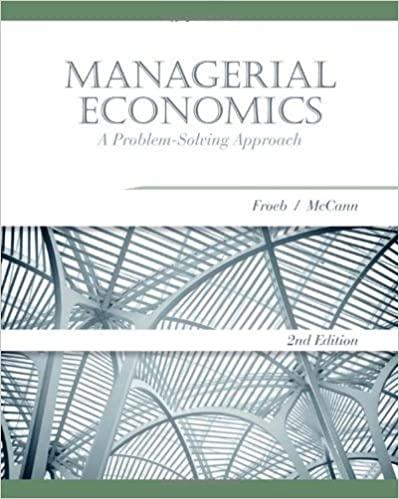Question
In recent weeks, the yield curves for several countries have flattened significantly: In South Korea, the spread between 10- and 3-year bond yields has sunk
In recent weeks, the yield curves for several countries have flattened significantly:
- In South Korea, the spread between 10- and 3-year bond yields has sunk from over 100 basis points (bps) in May 2021 to under 50 bps in July and again in October;
- In New Zealand, 10-year bond yields were over 150 bps above 2-year bond yields back in May but the gap has narrowed to less than 70 bps repeatedly since August;
- In the UK, the yield spread between 10-year bonds and 2-year bonds had stayed above 75 points in April and May but fell to 41 both in August and again in October.
a) What does a yield curve flattening mean for the expected future performance of the economy? Are financial market participants in South Korea and New Zealand more optimistic or pessimistic now than six months ago? Why? Explain.
In the UK, the yield curve flattening became especially pronounced in late October, with long-end bond yields (the rates on 10-, 20- and 30-year "gilts") plummeting at the fastest pace since the start of the Covid-19 pandemic in March 2020 and sending the spread versus short- and medium-term rates to their lowest in over a year. This was widely interpreted by analysts and pundits as evidence that market participants were worried about the Bank of England's monetary policy. Throughout October, members of the Bank's Monetary Policy Committee (MPC) had spoken publicly about their concerns over rising inflation and their determination to act decisively to combat it by raising the interest rate.
On Thursday, November 4, 2021, the Bank of England's MPC voted to leave its policy rate (the 'Bank Rate') unchanged at its historic low of 0.10%, surprising investors who had fully anticipated an increase. On that day, the British pound fell sharply against both the US dollar (more than 1%) and the euro (more than 0.5%) and stayed lower. The yields on 2-year gilts fell by 21 bps.
b) Explain why the pound depreciated when the Bank of England surprised market participants by not hiking its policy rate as expected.
c) Explain why the yield curve steepened again after the Bank of England's decision not to raise rates. Are UK financial market participants more optimistic or more pessimistic about the future performance of the British economy than they were in October? Why?
Step by Step Solution
There are 3 Steps involved in it
Step: 1

Get Instant Access to Expert-Tailored Solutions
See step-by-step solutions with expert insights and AI powered tools for academic success
Step: 2

Step: 3

Ace Your Homework with AI
Get the answers you need in no time with our AI-driven, step-by-step assistance
Get Started


